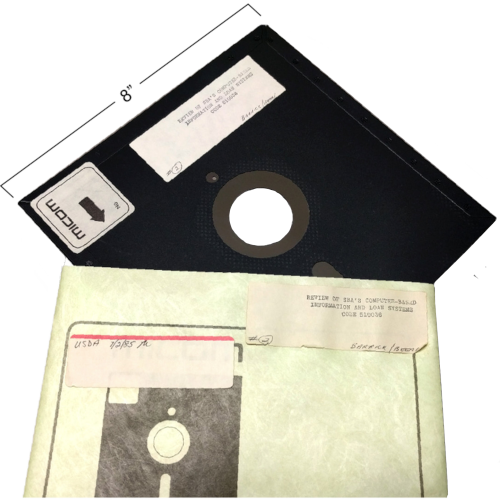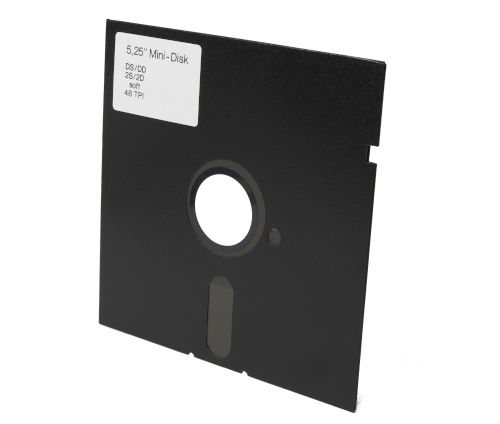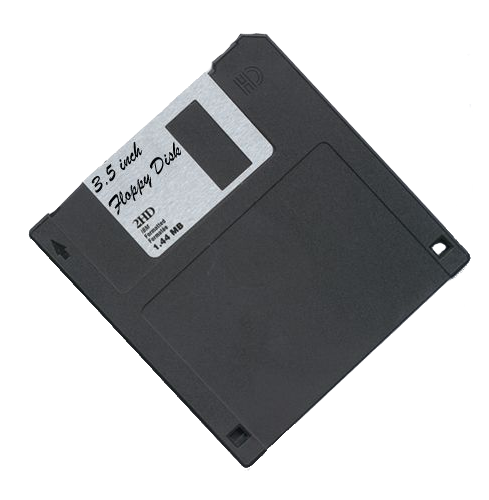 Name: Punched card (1964)
Name: Punched card (1964)Capacity:
Description: A punched card (also punch card) is a piece of stiff paper that can be used to contain digital data represented by the presence or absence of holes in predefined positions. Digital data can be used for data processing applications or used to directly control automated machinery. Punched cards were widely used through much of the 20th century in the data processing industry, where specialized and increasingly complex unit record machines, organized into semiautomatic data processing systems, used punched cards for data input, output, and storage. The IBM 12-row/80-column punched card format came to dominate the industry. Many early digital computers used punched cards as the primary medium for input of both computer programs and data. Check more information on wiki: https://en.wikipedia.org/wiki/Punched_card
 Name: Tape (1978)
Name: Tape (1978)Capacity: 100,000 bytes per 60-minute cassette.
Description: Tape drives were very popular with home computer systems through the 1970's through the 1980's. Many home computers had audio jack interfaces on them so off the shelf tape cassette players could be plugged into them.
 Name: 8 inches floppy diskette (1960)
Name: 8 inches floppy diskette (1960)Capacity: 128KB
Description: A floppy disk or floppy diskette (sometimes casually referred to as a floppy or diskette) is a type of disk storage composed of a thin and flexible disk of a magnetic storage medium in a square or nearly square plastic enclosure lined with a fabric that removes dust particles from the spinning disk. Floppy disks are read from and written to by a floppy disk drive (FDD). The first floppy disks, invented and made by IBM, had a disk diameter of 8 inches (203 mm). They became commercially available in 1971 as a component of IBM products and then were sold separately beginning in 1972 by Memorex and others. These disks and associated drives were produced and improved upon by IBM and other companies such as Memorex, Shugart Associates, and Burroughs Corporation. The term "floppy disk" appeared in print as early as 1970, and although IBM announced its first media as the "Type 1 Diskette" in 1973, the industry continued to use the terms "floppy disk" or "floppy".
 Name: 5 1⁄4-inch floppy diskette (1976)
Name: 5 1⁄4-inch floppy diskette (1976)Capacity: 360KB
Description: A floppy disk or floppy diskette (sometimes casually referred to as a floppy or diskette) is a type of disk storage composed of a thin and flexible disk of a magnetic storage medium in a square or nearly square plastic enclosure lined with a fabric that removes dust particles from the spinning disk. Floppy disks are read from and written to by a floppy disk drive (FDD). In 1976, Shugart Associates introduced the 5 1⁄4-inch FDD. By 1978, there were more than 10 manufacturers producing such FDDs. There were competing floppy disk formats, with hard- and soft-sector versions and encoding schemes such as FM, MFM, M2FM and GCR. The 5 1⁄4-inch format displaced the 8-inch one for most applications, and the hard-sectored disk format disappeared. The most common capacity of the 5 1⁄4-inch format in DOS-based PCs was 360 KB, for the DSDD (Double-Sided Double-Density) format using MFM encoding. In 1984, IBM introduced with its PC-AT model the 1.2 MB dual-sided 5 1⁄4-inch floppy disk, but it never became very popular.
 Name: 3 1⁄2-inch floppy diskette (1987)
Name: 3 1⁄2-inch floppy diskette (1987)Capacity: 1.44MB
Description: IBM started using the 720 KB double-density 3 1⁄2-inch microfloppy disk on its Convertible laptop computer in 1986 and the 1.44 MB high-density version with the PS/2 line in 1987. These disk drives could be added to older PC models. In 1988, IBM introduced a drive for 2.88 MB "DSED" (Double-Sided Extended-Density) diskettes in its top-of-the-line PS/2 models, but this was a commercial failure.